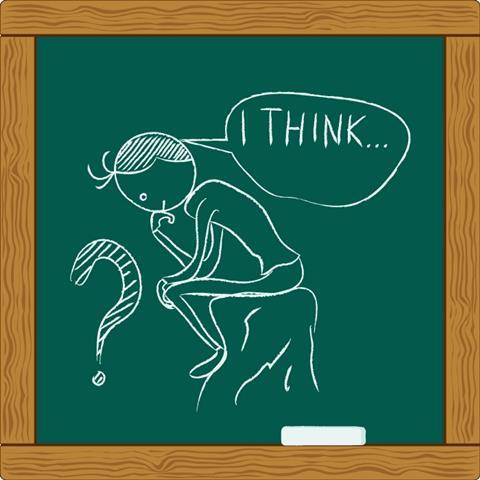Lynda Dunlop argues why science students need philosophy and suggests ways to incorporate it in existing schemes of work
Knowing chemistry is not enough. Advances in chemical science raise questions with political, social, economic and ethical dimensions, not to mention questions about how chemical knowledge is created. It is essential young people reflect on these questions to develop their scientific literacy. Then, they can use chemistry to make decisions and hold policy-makers to account.
Philosophy is concerned with the search for truth and meaning, and with stimulating people to think and argue for themselves. Introducing a philosophical dimension to school chemistry promotes critical thought, imagination and an appreciation of complexity. It also gives students the opportunity to examine their assumptions and highlight – even play with – uncertainty. Thinking and arguing in pursuit of an unknown has the potential to engage students with chemistry beyond the laboratory.

Dialogue not debate
When doing philosophy, use dialogue rather than debate. Debate favours a competitive approach to winning an argument; to change your mind is to lose. In dialogue there is a search for meaning, and a change of mind represents being convinced by better reasoning. The teacher’s role is to manage the dialogue.
Ending philosophical discussion can be challenging. A lack of immediate resolution can be unsettling, so it is important to emphasise the value in thinking and talking about such questions. Students learn how to persevere, to handle disagreement and uncertainty, and to work together to make sense of difficult ideas. They develop curiosity, humility, flexibility and open-mindedness.
Philosophical dialogue also helps illuminate what the class knows about chemistry, and how secure it is in that knowledge. This information is valuable to teachers beyond the context of philosophical dialogue.
Here are three strategies to incorporate philosophical discussion into chemistry teaching.
1 – Relate chemistry to students’ lives
Although they are constrained by scientific knowledge, you can’t answer philosophical questions using scientific methods. In a chemistry lesson, philosophical questions can be presented by the teacher or created by students in response to a stimulus. Examples include:
- Is everything made of something?
- If you take a medicine to make you happy, are you happy?
- Can a scientist invent a chemical?
- Is the space between particles in a gas part of the gas?
- Is a cook a chemist?
Likewise, playful ponders like ‘if chemistry were a drink, what drink would it be?’ generate discussion that encourages students to examine the nature of chemistry. Analysis of these ideas can inform teachers about how students are making sense of chemistry, and support students to relate chemistry to their lives and the world.
2 – Analyse concepts
Break down what concepts mean and how they are used. One method is to ask students to draw distinctions between related concepts, for example in chemistry:
- Theory and hypothesis
- Knowledge and truth
- A law and a rule
- A risk and a hazard
Another way of examining concepts is to use diagrams such as a Venn diagram or concept quadrant. In a concept quadrant, the central concept is written on the middle of a page or board. This can be any chemical or philosophical concept from a teaching situation or contained in a philosophical question eg bond, rock, metal, safe, or natural. Students identify and discuss synonyms, antonyms, connections and examples.
Examining the similarities and differences between concepts, and highlighting how these differ by degree, kind or relation helps the group to better understand the central concept and how it is used in chemistry and beyond.
3 – Map out thought experiments
A thought experiment involves thinking imaginatively about a situation to identify consequences and arrive at conclusions. These can be drawn out on paper in a consequence map. The problem is written in the centre, and a group of students map out the explanation, solution and consequences. This involves identifying the problem, creating an idea to explain or solve the problem, identifying the implications of the hypothesis (if X is true, then Y) and testing the implications. Through this, students create and consider chains of consequences and consider whether mitigating action might be needed.
Reflecting on the nature of thought experiments after students have attempted one can provoke students to think about the characteristics of concrete experiments. They also present an opportunity to practice, and make explicit, hypothetical reasoning.
Resources, further reading and evidence
Resources and training for teachers in doing philosophy with children are available from SAPERE and The Philosophy Foundation.
Stimuli for philosophical dialogue in chemistry include plays and stories such as Oxygen (Djerassi), Einstein’s Gift (Thiessen), Copenhagen (Frayn), Tim Sprod’s Discussions in Science and the British Library’s Voices of Science archive of interviews with scientists about their lives and work.
To promote good argumentation practices in class see How to argue with your students.
Well-known thought experiments:
- Jackson’s Mary’s Room: Mary knows everything about the science of colour vision. However she lives in a black and white room, having learnt everything from books and without seeing colour. When Mary leaves the room and sees a red apple for the first time, does she learn anything new?
- The Ship of Theseus: the central question is whether an object remains the same following the gradual replacement of every component. Traditionally the object is a ship, but the ship could be replaced by a chemical entity.
Research that suggests doing philosophy improves student outcomes:
- Philosophy for Children: Evaluation report and executive summary. London: Education Endowment Foundation
- ‘Philosophy for children’: a systematic review [£]
The Royal Society of Chemistry is supporting the Talking Chemistry project at the University of York. Students and staff from the departments of chemistry, education and philosophy are working together to develop further examples for classroom use. For more information, email the author.












1 Reader's comment